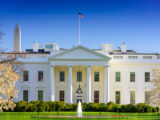
G7 Finalizing Plans For A Price Cap On Russian Oil
June 27, 2022G7 countries will decide on developing mechanisms to set a global price cap for Russian oil in shipments to countries outside of the U.S., EU, the UK, and the broader G7.
“The goal here is to starve Russia — starve Putin of his main source of cash and force down the price of Russian oil to help blunt the impact of Putin’s war at the pump”, a Senior Biden Administration official said in a background press call ahead of the Second Day of the G7 Summit in Germany.
The G7 leaders are discussing Ukraine at Schloss Elmau, Krün.
Addressing the G7 summit via video-link, Ukrainian President Volodymyr Zelensky appealed for more weapons for his forces to fight their Russian counterparts.
He told the leaders of the world’s seven major economies that he wants the war to end by the end of the year “before winter sets in”.
As part of a coordinated G7 announcement on Tuesday, the leaders are expected to issue a statement of support for Ukraine, which will include significant new sanctions on Russia to intensify economic pressure on that country.
The Summit will also announce significant commitment to help Ukraine cover its short-term budgetary shortfalls, including a $7.5 billion from the United States from the recently passed second supplemental.
“President Biden and the whole team here have been working around the clock to leverage the fact that close to 50 percent of the world’s economy is in one place and put forward further efforts to support Ukraine, hold Russia accountable, and manage the impacts of Putin’s war on the global economy,” said the US official.
The dual objectives of G7 leaders have been to take direct aim at the Putin regime’s revenues, particularly through energy, and to minimize the spillovers and the impact on the G7 economies and the rest of the world.
G7 leaders will align and expand targeted sanctions to further restrict Russia’s access to key industrial inputs, services and technologies produced by G7 economies, particularly those supporting Russia’s armament industrial base and technology sector.
On Tuesday, the United States’ Departments of State and Treasury will aggressively target Russian defense supply chains by imposing blocking sanctions on major state-owned defense enterprises, in addition to defense research organizations, and dozens of other defense-related entities and individuals, and limit Russia’s ability to replace the military equipment it has already lost during its war against Ukraine.
Pursuant to Congress’s revocation of Russia’s trade status in the U.S., Washington will implement a higher tariff rate on more than 570 groups of Russian products worth approximately $2.3 billion.
These measures will restrict Russia’s ability to benefit economically from sales to the U.S. market. The administration official said it is not expected to have impacts on U.S. supply chain or raise costs to U.S. consumers.
On Tuesday, the U.S. Departments of Treasury and State will implement blocking sanctions on private military companies operating in Ukraine, Russian military units that have been credibly implicated in human rights abuses or violations of international humanitarian law in Ukraine, and Russia-installed senior officials in contested areas, including ministers and mayors of contested cities.
The State Department will impose visa restrictions on approximately 500 Russian officials.
Meanwhile, it was reported overnight that Russia defaulted on its sovereign debt for the first time in more than a century.
In a span of a few months, U.S. exports to Russia, including of critical technology inputs to maintain its military, have decreased by 97 percent. Russia’s imports of goods from around the world could fall by as much as 40 percent this year.
Factories across the country are struggling to maintain production. Russia’s GDP is likely to fall by double digits this year, and inflation is rising to over 20 percent.
Source: Read Full Article


